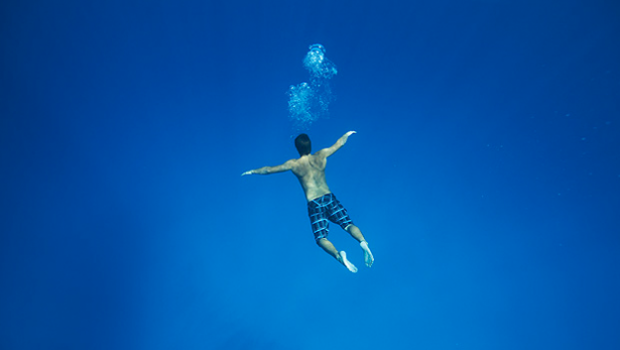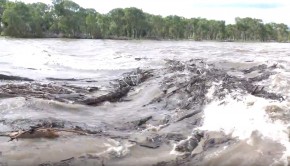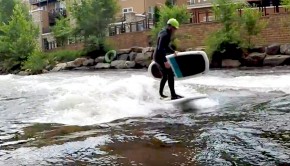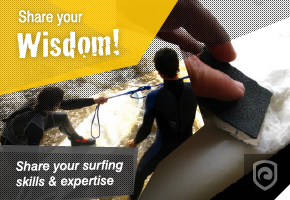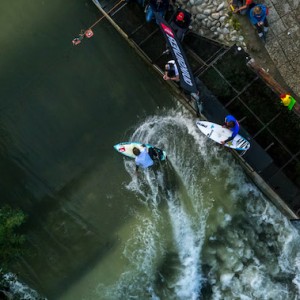How to Hold your Breath During a Longer Hold Down
Not to panic is key when getting trapped in a river barrel. But staying calm is easier said than done when you’re short of air during a long hold down. To ease your fear of drowning, we have put together a few practical tips to increase your “air-time”.
There are two essential things that need to be trained in your breath-holding workout: body and mind. Most of the exercises focus on physical aspects, but being “mentally prepared” is key too.
The logic behind your whole workout is simple: you want your body to perform while using only minimal amounts of oxygen. Here, the issue is that river surfers usually use their thighs to paddle out of a current. The thigh muscles, however, are the biggest muscles in our body — nothing burns your breath faster. To increase your stamina it is crucial to boost your muscles without burning additional amounts of air.
An excellent training to increase your stamina are swimming laps combined with simple breathing exercises. Consciously slowing down your breath or breathing every other stroke will boost your stamina significantly.
A more extreme breath-holding workout is running rocks underwater. Note that this advanced training bears the risk of a blackout and thus should never be done alone. Another workout which can be done in a pool is swimming laps underwater — hold your breath and use swim fins.
Getting comfortable in such situations is crucial and it’s your state of mind that will pull you through in the end.
If you’re into diving you will find that freediving is another way to train your lungs and to greatly increase your cardiovascular performance. Freediving does not involve the use of scuba gear or other external breathing devices, but rather relies on your ability to hold your breath until resurfacing.
All these exercises will greatly increase your underwater time — but they are useless if your mental state doesn’t keep up with your physical fitness. Breath-holding exercises only pay off if they’re combined with mental exercises (as many of them are used in freediving).
Ultimately, you need to be physically and mentally ready in these defining moments. Being able to hold your breath for minutes in a pool is different from being able to have a clear mind when you’re trapped in a current. Getting comfortable in such situations is crucial and it’s your state of mind that will pull you through in the end.
Some horrifying stories about monster hold downs may be tales but many are true. To worry less about these stories and to prepare yourself for extreme situations: Get your lungs in shape and strenghten your mental equilibrium.

